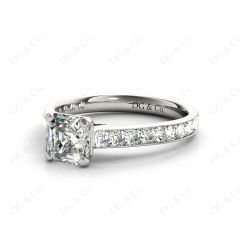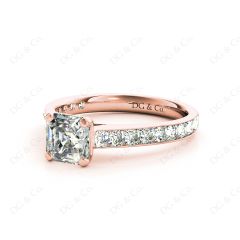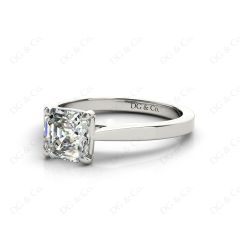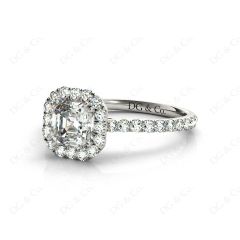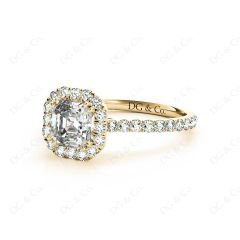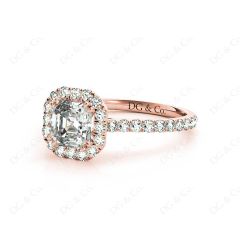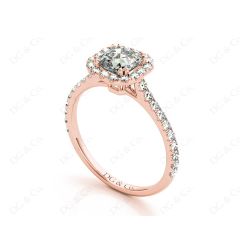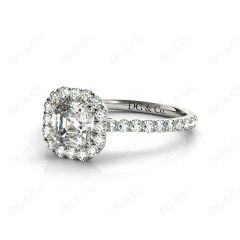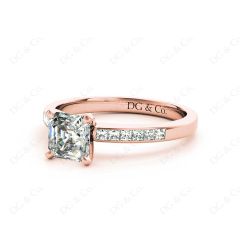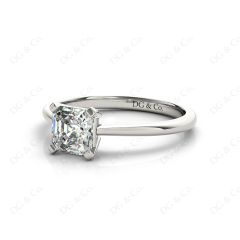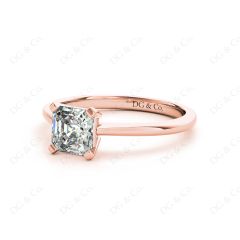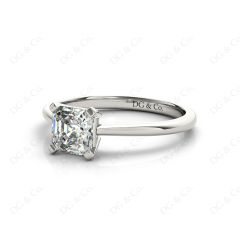Asscher Cut Engagement Rings
Frequently Asked Questions
The main difference between an Asscher and an Emerald cut engagement ring is in their shape. The Emerald cut is rectangular with cut corners, has a wider table, and a smaller crown than the Asscher cut, which is square with cropped corners. The Asscher cut's step-cut faceting produces linear light flashes, whereas the Emerald cut's wider step cut facets provide sweeping light flashes and dark planes.
The step-cut faceting of an Asscher cut diamond makes inclusions more obvious to the naked eye, thus clarity is vital. Less inclusions, more brightness, and greater value are associated with higher clarity grades. When buying any step cut diamond, it is advised to strive for a clarity grade of at least VS2 or greater (Emerald, Asscher etc).
Your Asscher cut engagement ring can be personalised. To make it more distinctive, you can pick the metal, the setting style, add accent stones, or alter the band pattern. The best approach to get started is to engage with one of our skilled jewellers who can lead you through the process and assist you in creating a ring that exactly matches your vision.
Typically square in form, asscher cut diamonds. With chopped corners and straight sides and a square or almost square form, they offer a unique and beautiful look. The Asscher Brothers of Holland created the Asscher cut, a variant of the emerald cut, around the start of the 20th century. The original shape, which had 58 facets, was created to highlight the diamond's clarity while also enhancing its brilliance and fire.
A solitaire setting is often the most popular choice for an Asscher cut diamond. This setting highlights the diamond's distinctive form and enhances its fire and brightness. Other popular options include, side stone and trilogy settings, which also accentuates the asscher cuts natural beauty.
Asscher cut engagement rings have grown in popularity recently, providing a distinctive and elegant substitute for the traditional emerald cut. It has a classic and elegant appeal, and several celebrities have contributed to its resurgence in popularity.
The Asscher brothers in the Netherlands invented the Asscher cut, around the start of the 20th century. It's a step cut with a square or rectangular shape, cut corners, and a deep pavilion that gives it a distinctive and classy appearance. The concentric square facets of the Asscher cut give the diamond a distinctive pattern of bright and dark regions. The cut, which typically has 58 facets, a high crown, a small table, and is intended to enhance the diamond's brilliance and fire, typically has these features.
Free Shipping
Lifetime
Guarantee
Complementary
Valuation
Conflict Free
Diamonds

30 Day Money Back
Guarantee
DG & Co. Guarantees
Free Shipping
Lifetime
Guarantee
Complementary
Valuation
Conflict Free
Diamonds

30 Day Money Back
Guarantee
Contact Us


